When it comes to organization, finding a system that works for your specific situation can seem overwhelming at first. The feeling of “so much to do, so little time” can often wander into our minds and leave us feeling less than inspired to take on the task of organizing our space.
If you’ve ever looked at your kitchen cabinets and had these feelings come up, have no fear and take a deep breath! We’ve got the perfect kitchen cabinet organization tips to get you up to speed with the daunting task of organizing kitchen cabinets and drawers.
1. Purge and Declutter
The most important thing to kickstart a kitchen upgrade is to purge and declutter. That mountain of mismatched containers and those charred pots and pans won’t take care of themselves.
While it might feel like an impossible task, tackling the clutter is the first step toward turning your kitchen into a space that actually works for you. . If you’re thinking of remodeling during this process, working with custom cabinet designers can help tailor your storage to your needs. To get started, here are a few practical tips to help you identify the things that no longer serve you:
- Adopt the “one-year rule”. If you haven’t used an item in the past year, it’s time to let it go.
- Start with a single drawer or cabinet and fully declutter it before moving on to the next.
- Label three boxes as “Keep,” “Donate,” and “Trash.” As you go through each cabinet, place items into one of these boxes.
- Limit duplicates. Unless you’re a professional cook, you likely don’t need five spatulas or three sets of measuring cups. Keep the best of each item and donate or discard the rest.
- Discard anything that’s expired or unlikely to be used before it expires.
- Get rid of mismatched lids, containers, and anything that doesn’t pair well with other items in your kitchen.
2. Use Drawer Dividers
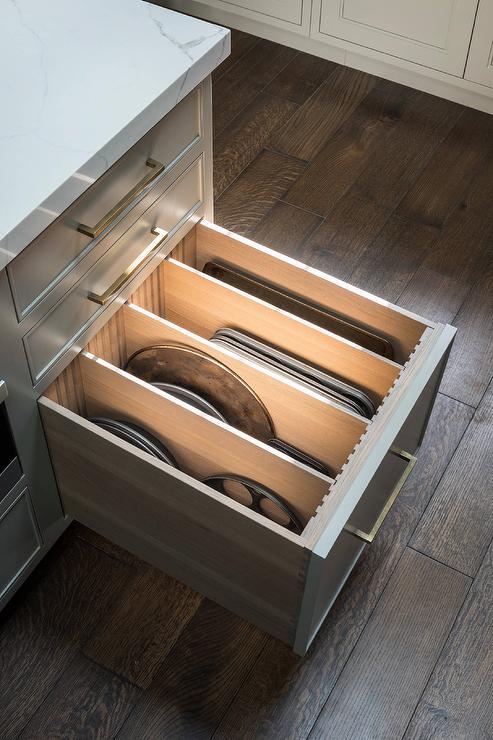
Add dividers to your drawers to keep utensils, knives, and small kitchen tools neatly separated. This prevents items from becoming jumbled and makes it easy to find exactly what you need when cooking. Drawer dividers also protect your tools from damage, helping them last longer and stay in good condition.
3. Incorporate Lazy Susans
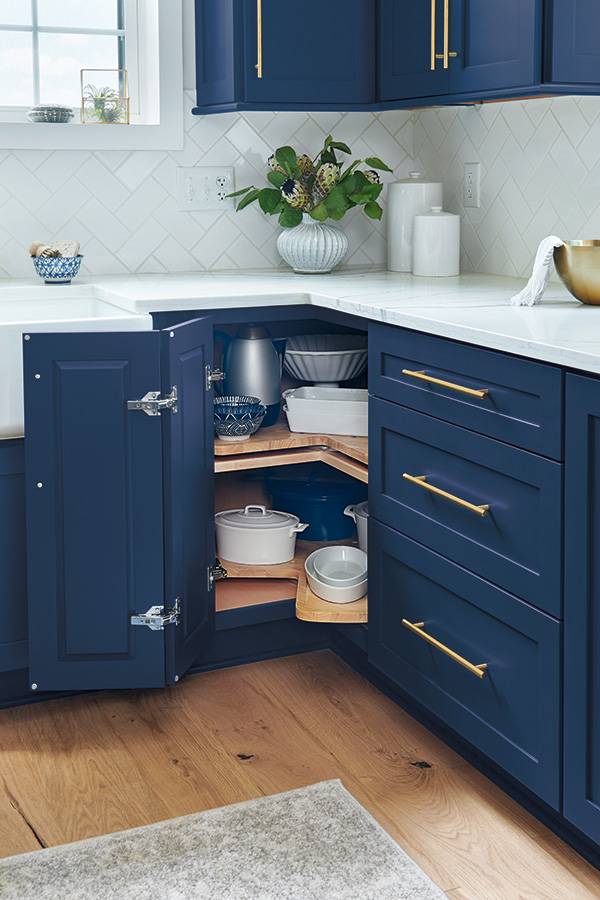
Install Lazy Susans in corner cabinets to utilize every inch of space. These rotating trays make it easy to access items at the back without having to reach or move other things out of the way. Use them for spices, condiments, or small jars to keep your kitchen organized and clutter-free.
4. Utilize Pull-Out Shelves
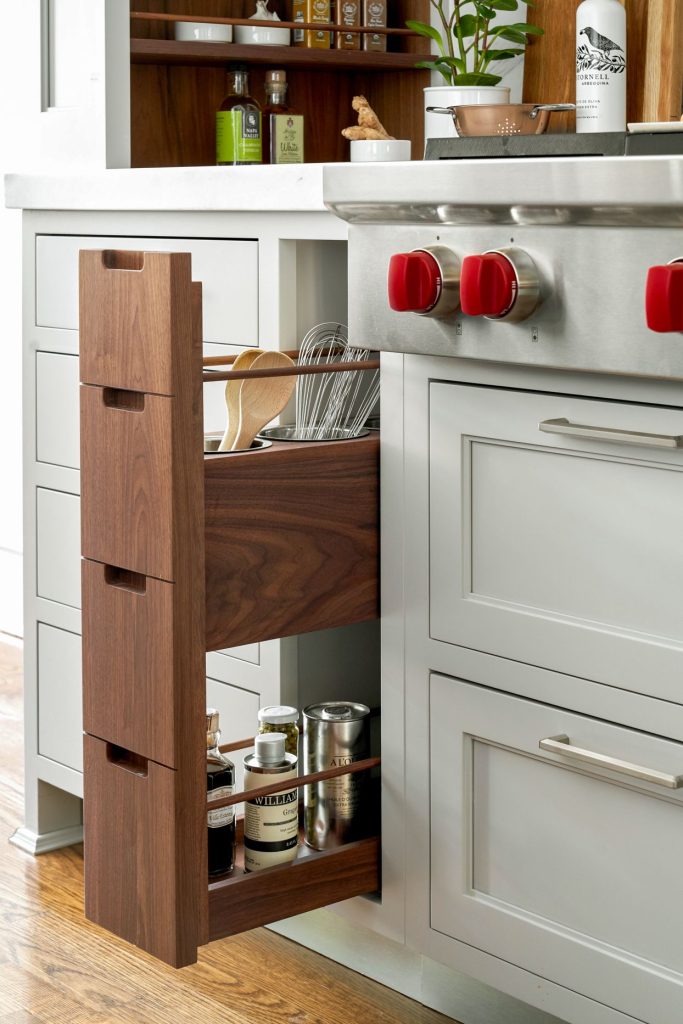
Add pull-out shelves to deep cabinets to make accessing items at the back a breeze. These shelves slide out smoothly, allowing you to see and reach everything stored inside without rummaging through the entire cabinet. This simple addition maximizes storage space and keeps your kitchen essentials within easy reach.
5. Arrange Items by Frequency of Use
If you’re wondering where to put things in kitchen cabinets, a good rule to follow is to arrange items by frequency of use. Place frequently used items, like pots, pans, and everyday spices, in easily accessible spots, such as lower shelves or near the stove. Store less-used items, like seasonal cookware or special occasion dishes, in higher cabinets or less convenient locations. This organization method streamlines your cooking process and keeps your kitchen efficient.
6. Use Clear Containers
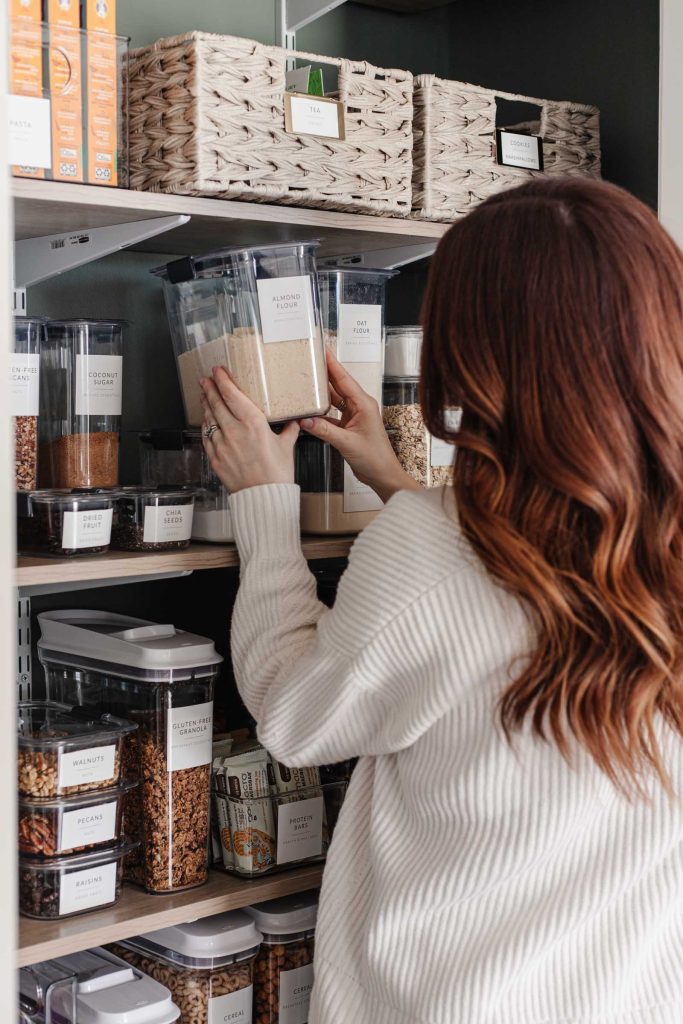
Choose clear containers for storing dry goods like flour, sugar, pasta, and rice. The transparency allows you to see what’s inside at a glance, helping you avoid running out of essentials unexpectedly. Clear containers also create a uniform look in your cabinets, making it easier to keep track of inventory and maintain an organized kitchen.
7. Add Shelf Risers
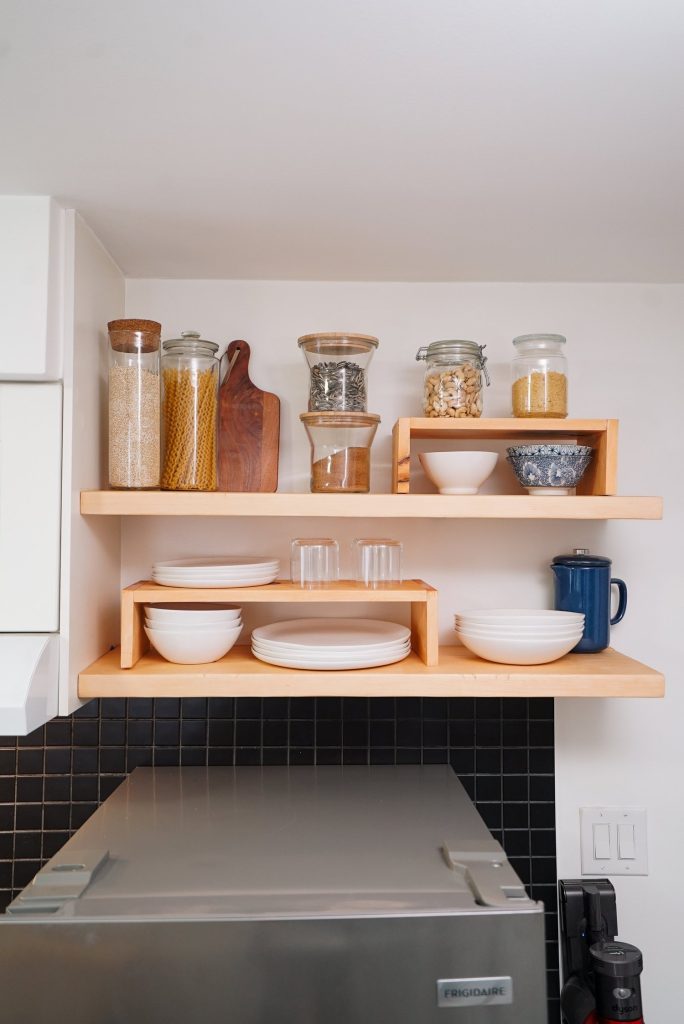
Place shelf risers in your cabinets to create extra levels, maximizing the vertical space. These simple additions allow you to stack items like dishes, mugs, or pantry goods without wasting any room. By adding risers, you double the storage space in each cabinet, making it easier to keep everything organized and accessible.
8. Use Vertical Dividers
Use vertical dividers or racks to store pots, pans, and cutting boards upright. This method saves valuable cabinet space and prevents damage caused by stacking heavy cookware on top of each other. Storing them vertically also makes it easier to grab the right pot or pan without having to move others out of the way, simplifying your cooking process.
9. Install Hooks or Pegs Inside Doors
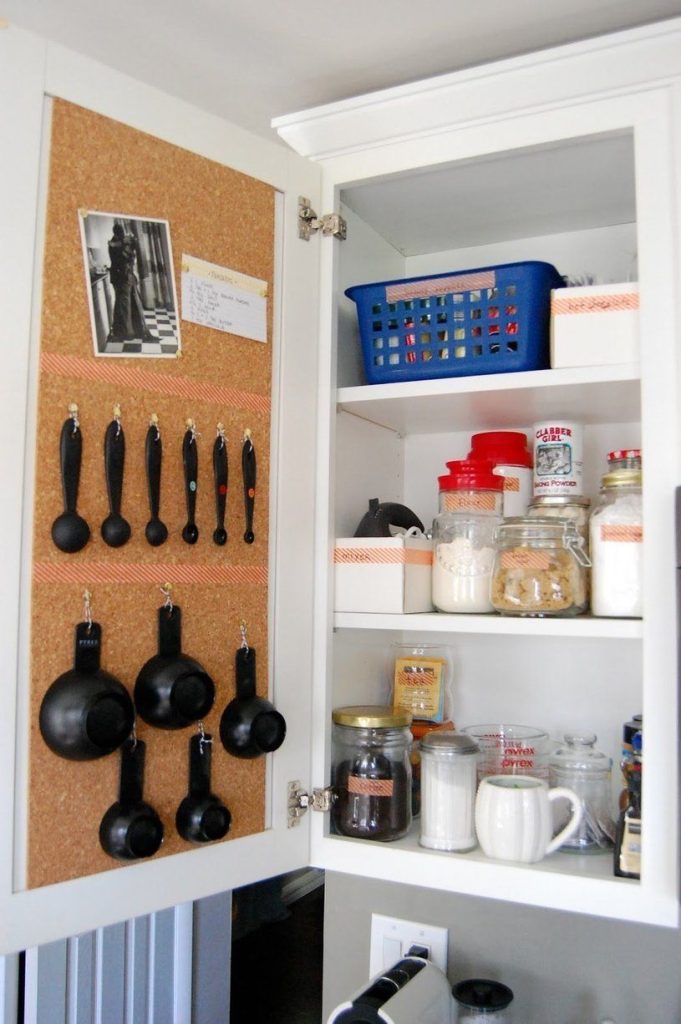
Add hooks or pegs to the inside of cabinet doors to hang measuring cups, spoons, or small gadgets. This clever use of space keeps frequently used tools within easy reach and frees up drawer space for other items. Hanging smaller items also prevents them from getting lost in drawers or cluttering up your countertops.
10. Group Similar Items Together
Place similar items, such as baking supplies, spices, or cooking oils, in the same cabinet to create a cohesive and efficient space. This method saves time during meal prep by keeping everything you need within arm’s reach. Grouping items by category also makes it easier to see what you have on hand, preventing unnecessary purchases. Here are some tips to help you make the most of this strategy:
- Store baking supplies like flour, sugar, and baking powder in the same cabinet or on the same shelf.
- Keep all your cooking oils, vinegar, and sauces together near the stove for easy access while preparing meals.
- Place all your spices in one designated area, either on a spice rack or a dedicated shelf within a cabinet.
- Group canned goods and non-perishable items in one cabinet or pantry section, organized by type for easy identification.
- Store all your food storage containers in one place, with lids kept in a separate bin or drawer to avoid mismatches.
- Keep coffee and tea supplies together, including mugs, sugar, and any other related items.
- Group cleaning supplies under the sink or in a separate cabinet away from kids, pets, and other food items.
11. Label Everything
Label containers, bins, and shelves to quickly identify where everything belongs. Clear labels eliminate the guesswork when searching for ingredients or kitchen tools, making it easier to maintain an organized space. Consistent labeling also helps family members know where to put things back, keeping your kitchen tidy with minimal effort.
12. Use Stackable Bins

Maximize your cabinet space with stackable bins. These bins allow you to organize items by category, such as snacks, baking ingredients, or pantry staples, while taking advantage of vertical space. Stackable bins are especially useful in smaller kitchens where cabinet space is limited. Label each bin to quickly identify contents, keeping your kitchen neat and organized.
13. Create a Baking Station
If your space allows it, set up a dedicated baking station by designating a specific cabinet or section for all your baking supplies. Store items like flour, sugar, baking soda, measuring cups, and mixing bowls together in one spot. This organization makes it easy to access everything you need when baking and keeps your kitchen from feeling cluttered with supplies scattered in different places.
14. Install Spice Racks
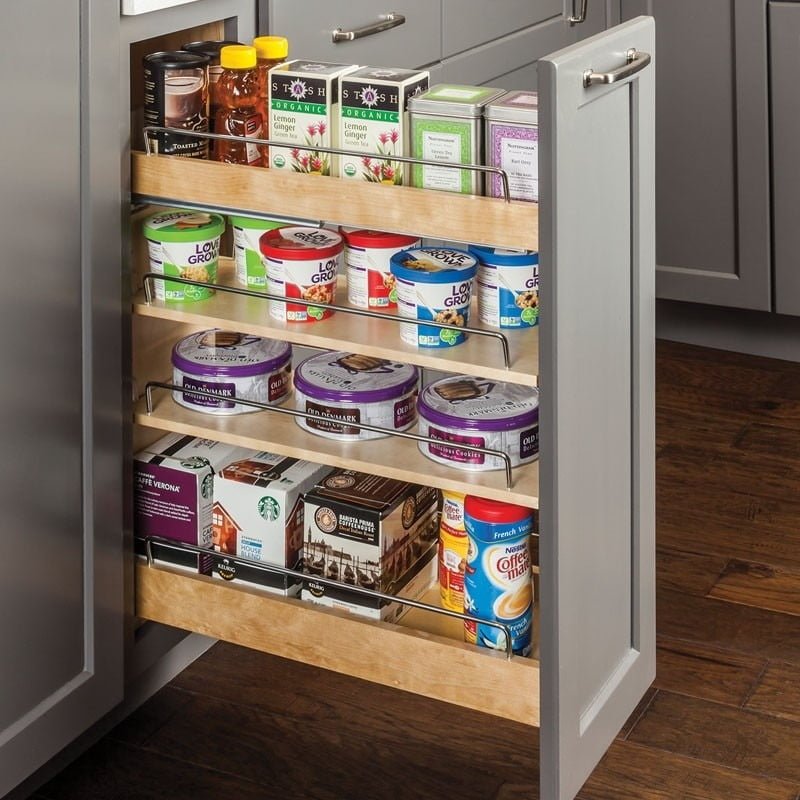
Install spice racks inside cabinet doors or on pull-out shelves to keep your spices organized and within reach. By placing spices in a dedicated rack, you save counter and drawer space while making it easier to find the right seasoning when cooking. Opt for tiered racks to see all your spices at a glance, preventing them from getting lost in the back of the cabinet.
15. Hang Pot Lids on Cabinet Doors
Utilize the inside of cabinet doors by hanging pot lids with adhesive hooks or a lid rack. This simple solution keeps lids organized and frees up valuable cabinet space. Storing lids on doors also makes it easier to match them with their corresponding pots, reducing frustration during meal prep.
16. Use Baskets for Loose Items
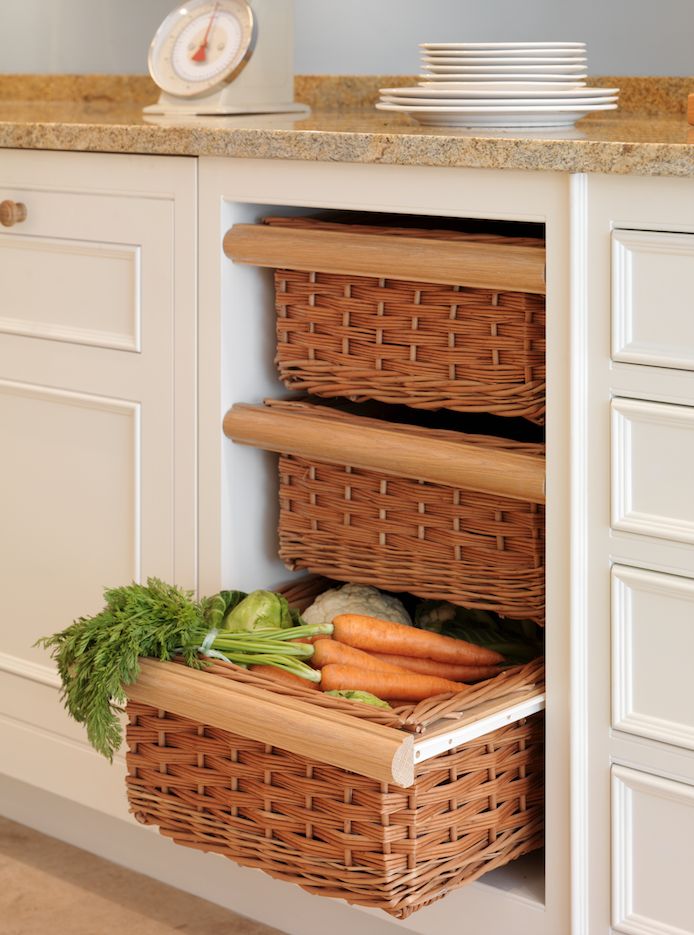
Contain loose items like snacks, small kitchen tools, or packet mixes in baskets. Baskets help you keep these items organized and easy to find, preventing them from cluttering your cabinets or countertops. Choose baskets that fit neatly on your shelves and label them for quick identification, making it simple to maintain a tidy kitchen.
17. Organize by Meal Prep Stages
Arrange your cabinets by grouping items needed for specific meal prep stages together. For example, store mixing bowls, measuring cups, and baking ingredients in one area while keeping cutting boards, knives, and prep tools in another. This setup streamlines your cooking process, allowing you to move smoothly from one stage to the next without hunting for tools.
18. Install Pull-Out Trash and Recycling Bins

Keep your kitchen looking tidy by installing pull-out trash and recycling bins in a lower cabinet. This setup hides unsightly bins and makes it easy to separate waste and recyclables without taking up floor space. The pull-out feature also allows for easy access when it’s time to empty the bins, making clean up more convenient.
19. Maximize Space with Corner Shelves
Make the most of awkward cabinet spaces by installing corner shelves. These shelves utilize often overlooked areas, giving you extra storage for items like small appliances, cookbooks, or decorative pieces. By adding corner shelves, you can create a more organized and functional kitchen layout that takes advantage of every inch of available space.
20. Rotate Items Seasonally
Keep your kitchen organized by rotating items seasonally. Store seasonal tools in less accessible cabinets during off-seasons. When the season changes, swap them with items you won’t need for a while. This method helps you maintain an organized kitchen without overloading your prime storage areas. Here’s a quick list of kitchen items that are best stored seasonally:
- Holiday Bakeware (cookie cutters, cake pans)
- Summer Grilling Accessories (skewers, grill baskets)
- Seasonal Tableware (holiday-themed plates, cups)
- Outdoor Entertaining Gear (picnic baskets, coolers)
- Specialty Appliances (ice cream makers, turkey fryers)
- Canning Supplies (jars, lids for harvest season)
- Festive Decorations (tablecloths, napkins for holidays)
21. Hang Mugs Under Shelves
Free up cabinet space by using under-shelf hooks to hang mugs. This simple addition allows you to store mugs in an otherwise unused area, keeping them within easy reach while leaving more room in your cabinets for other items. Hanging mugs also adds a touch of style to your kitchen, making it both practical and visually appealing.
22. Dedicate a Cabinet for Kids’ Items
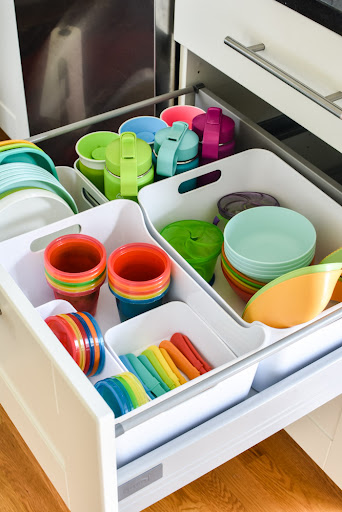
Create a special lower cabinet just for your children’s plates, cups, and snacks. Keeping these items at kid-friendly heights allows your little ones to grab what they need independently, making mealtime smoother for everyone. A dedicated cabinet also helps keep the rest of your kitchen organized by keeping kid-specific clutter off your kitchen floors.
23. Use Vertical Plate Racks
Store plates vertically using a plate rack to save cabinet space and prevent chipping. Vertical storage allows you to easily grab a plate without having to lift a heavy stack, reducing the risk of accidental drops.
24. Install a Roll-Out Pantry
Maximize narrow spaces in your kitchen by installing a roll-out pantry. These slim, pull-out units are perfect for storing canned goods, spices, or dry items, keeping them neatly organized and easily accessible. A roll-out pantry makes it easy to see and reach everything at once, turning an awkward space into a valuable storage area.
Choose Seattle Cabinets for Your Next Kitchen Upgrade
A well-organized kitchen starts with smart storage solutions, and Seattle Cabinets offers exactly that. Our custom kitchen cabinets are designed to maximize your space, providing practical and stylish ways to store everything from pots and pans to pantry items. We use high-quality kitchen cabinet materials like solid wood, veneer, laminate, and MDF to create durable, beautifully finished cabinets that complement your kitchen’s design.With high-quality craftsmanship and personalized designs, we can help you create a kitchen that’s not only beautiful but also incredibly functional. Ready to take your kitchen to the next level? Connect with us and get a free estimate today!




